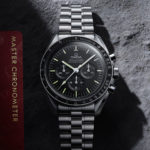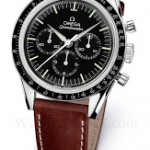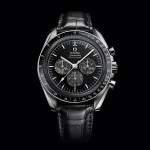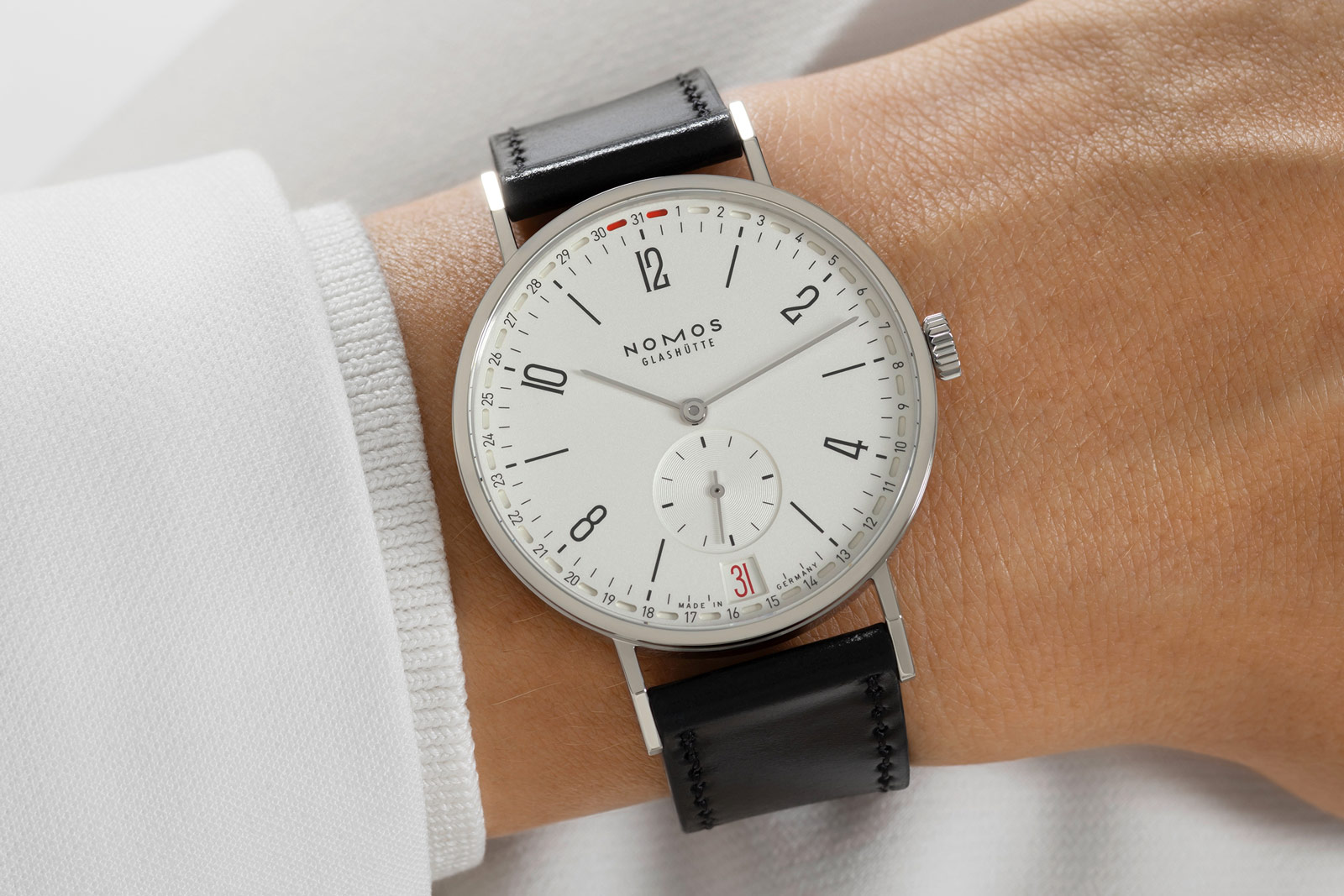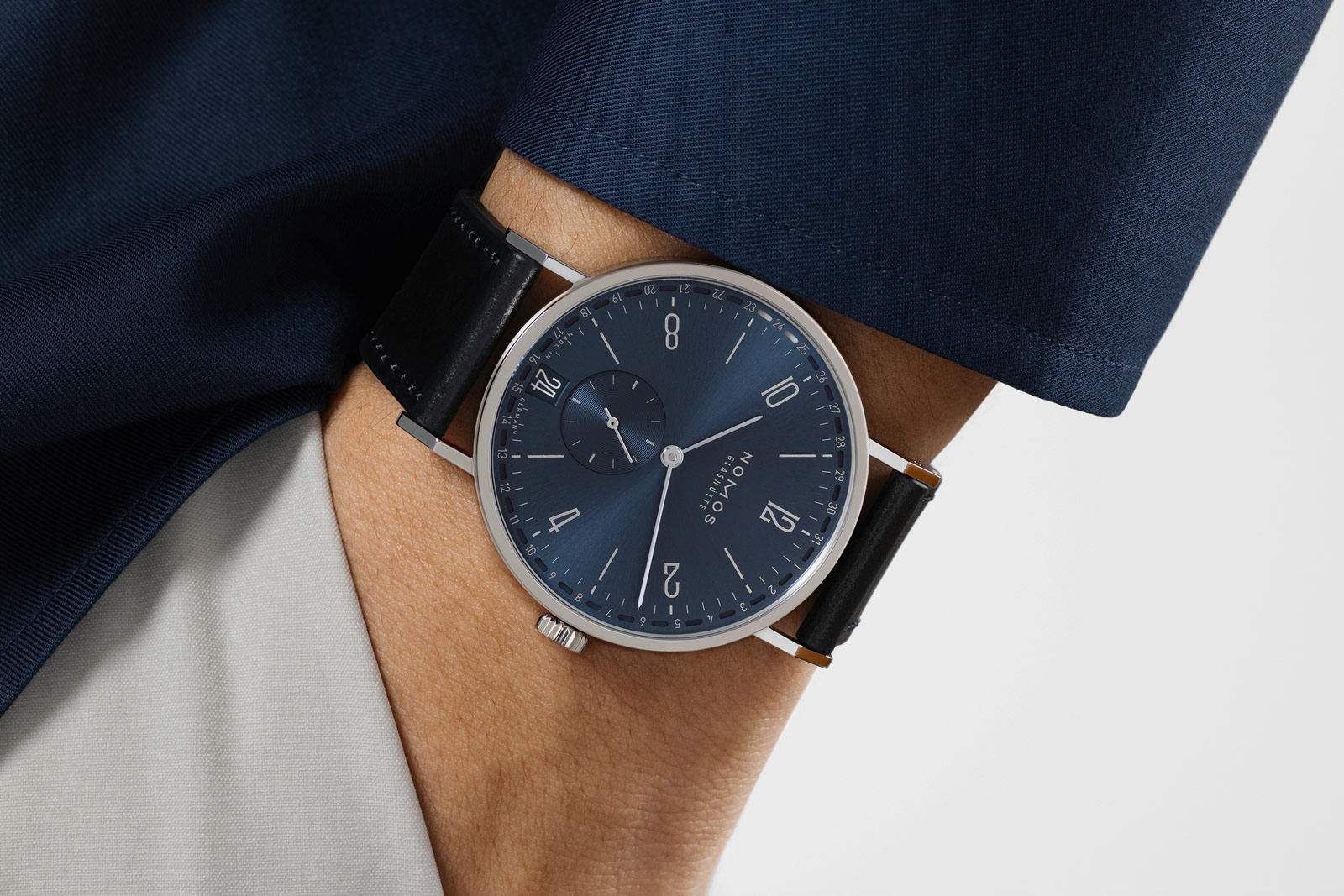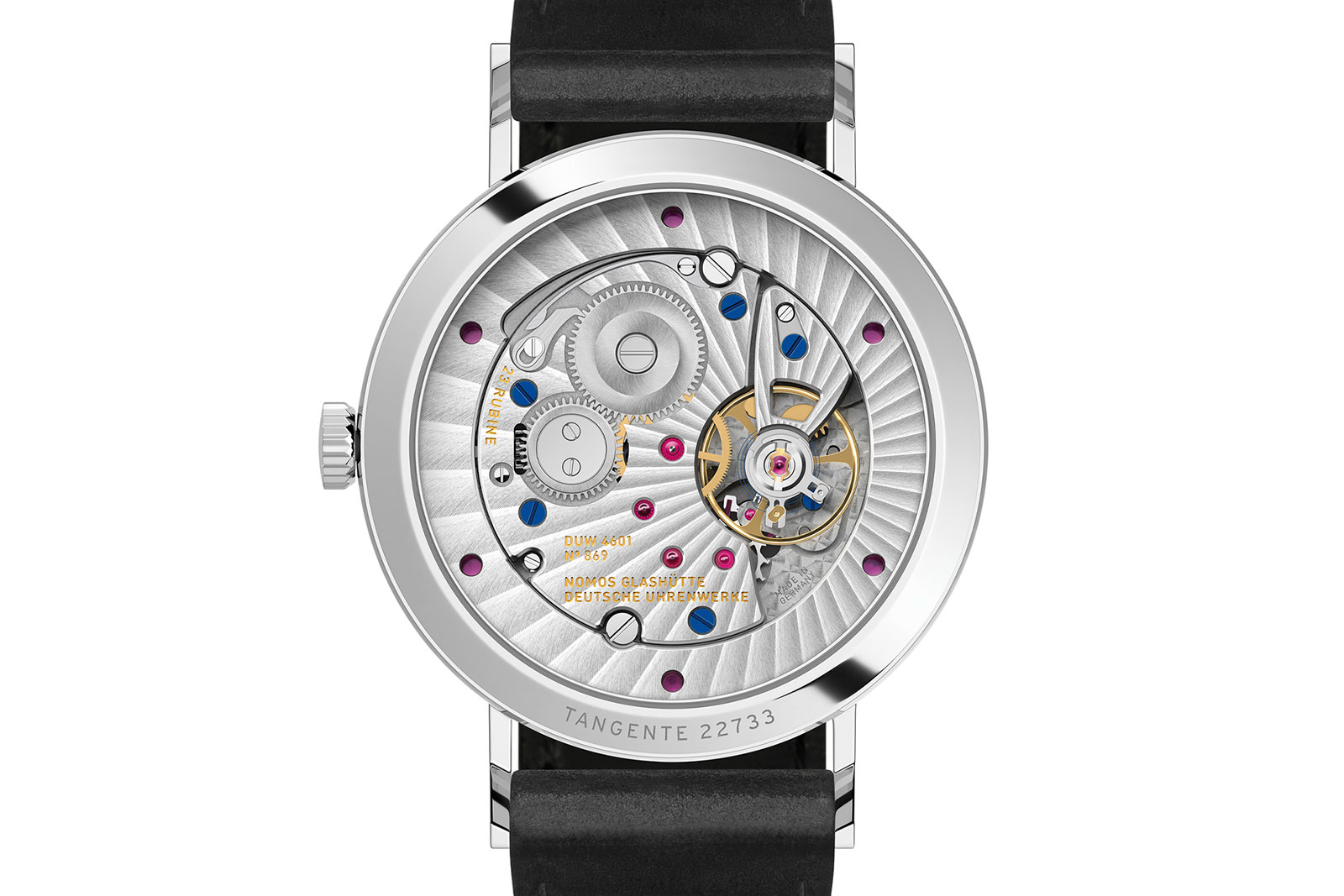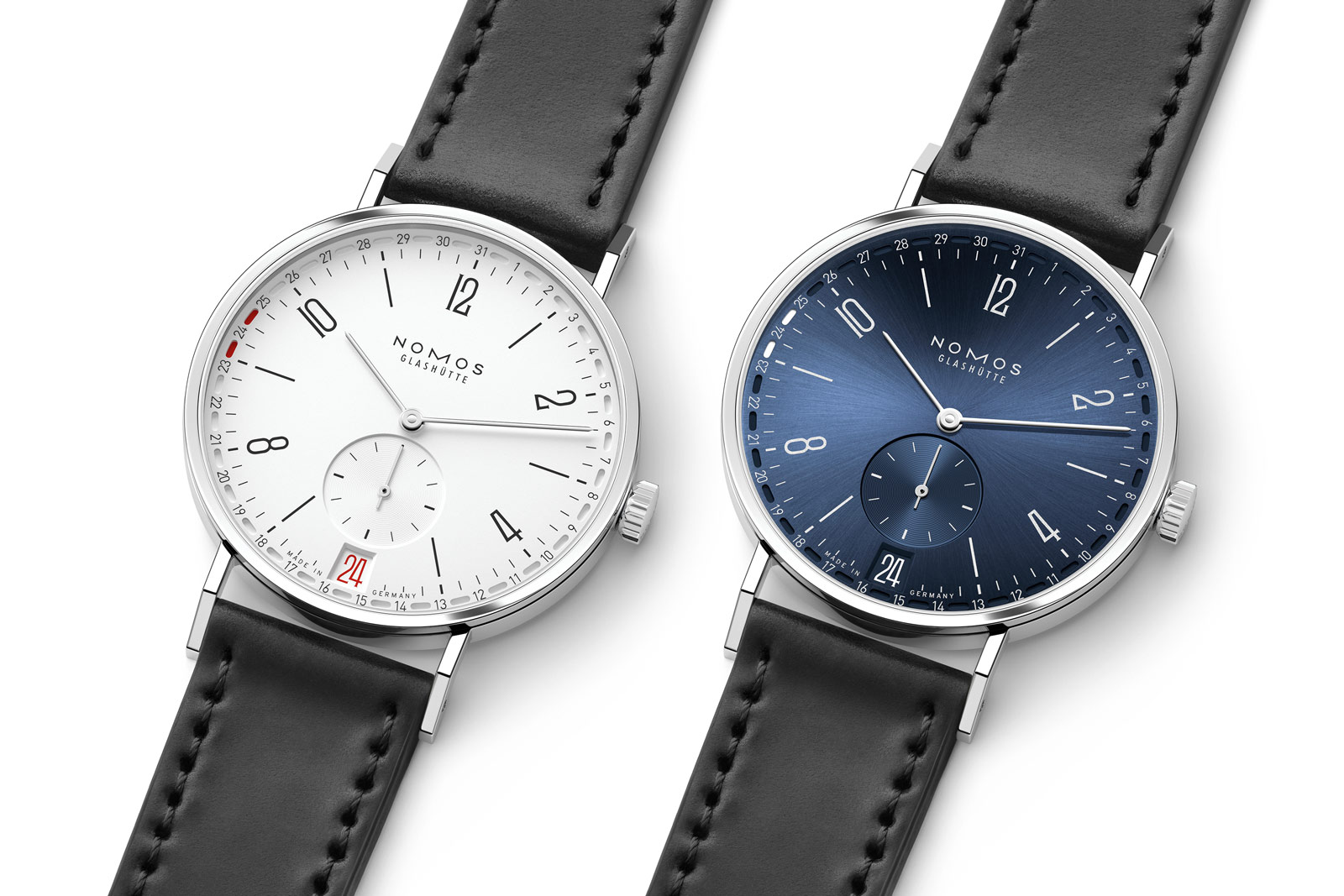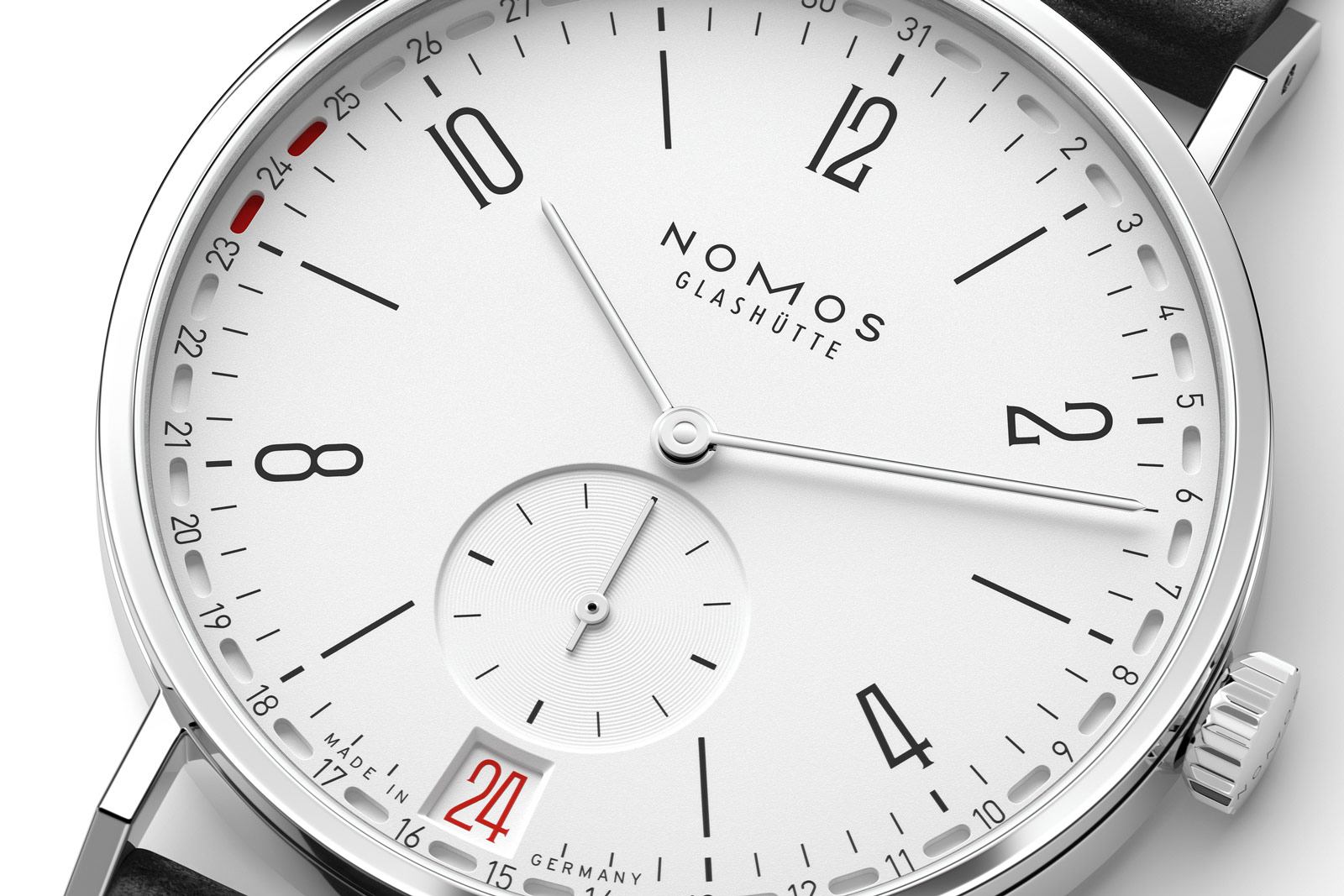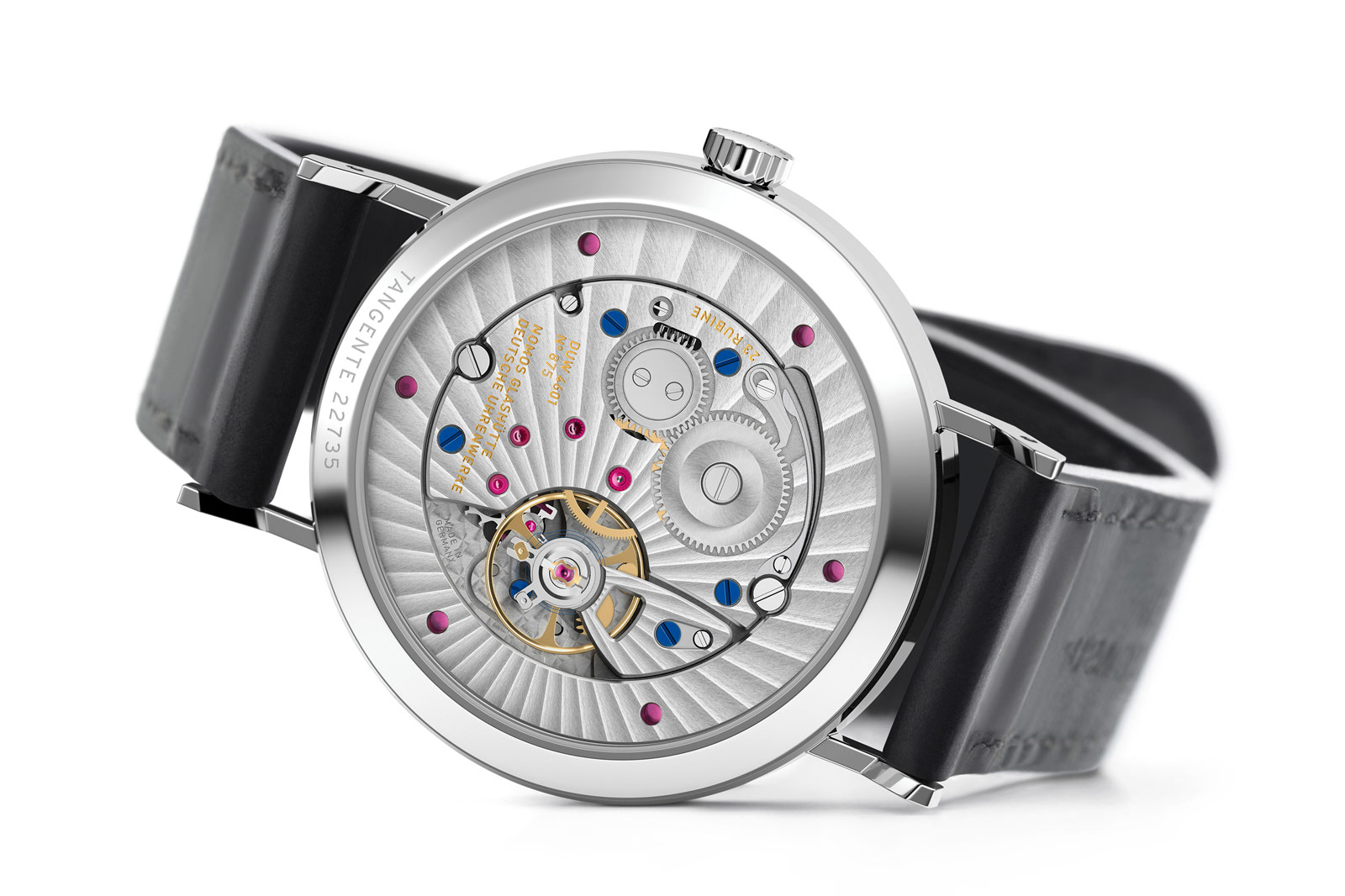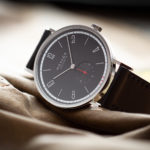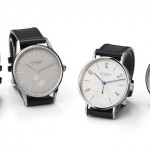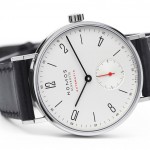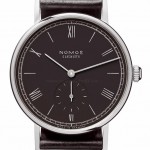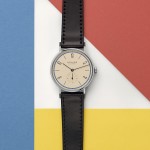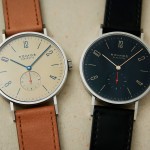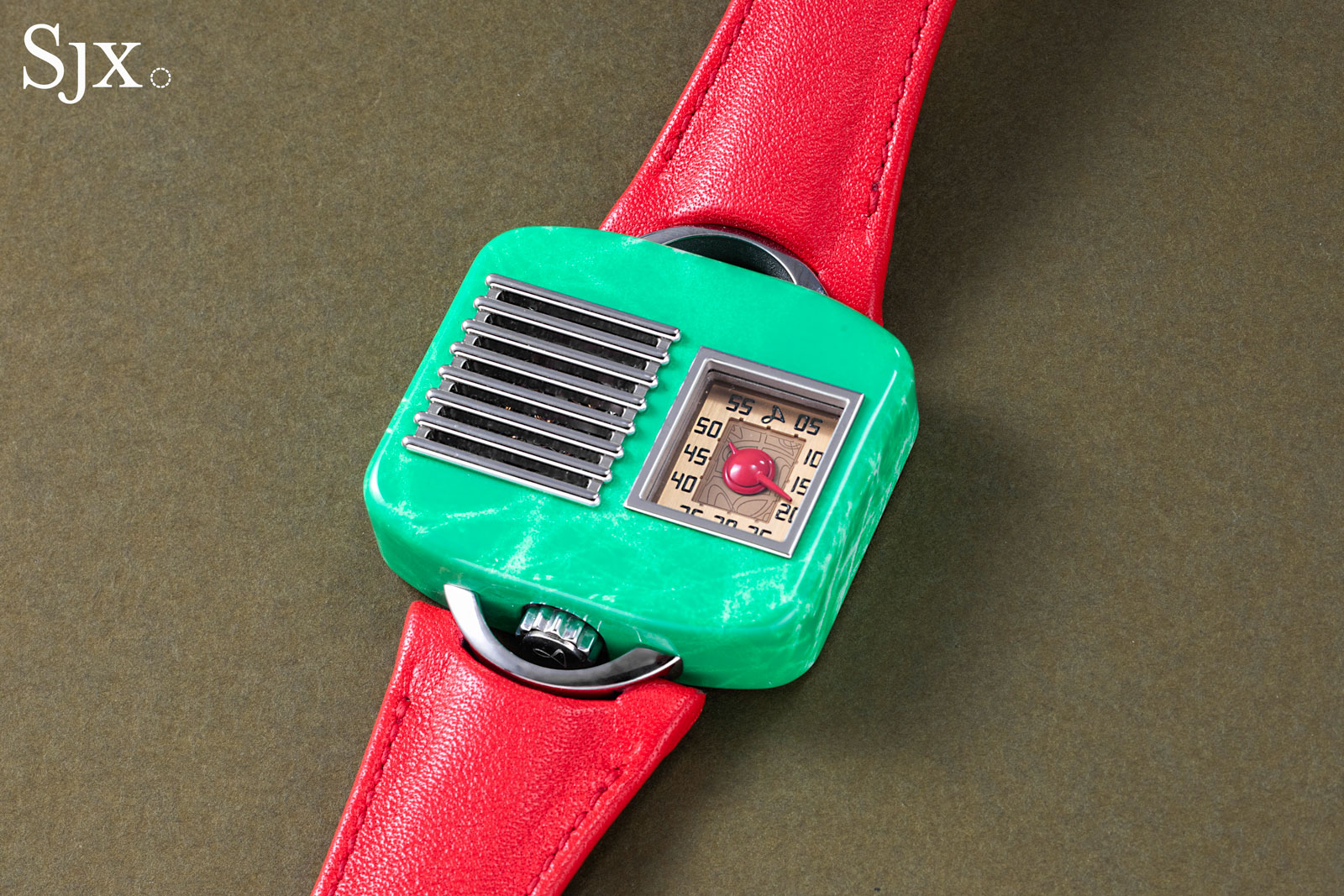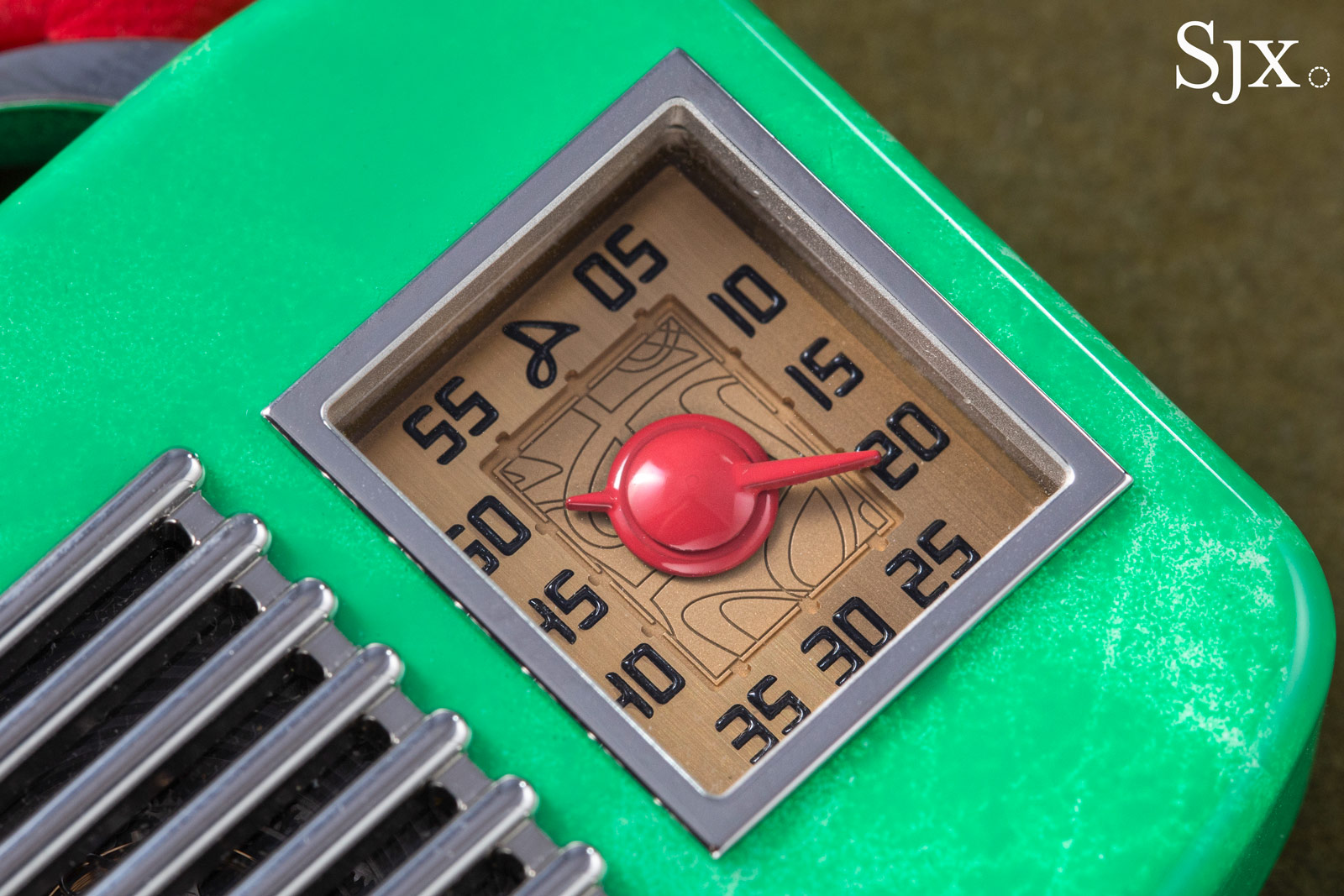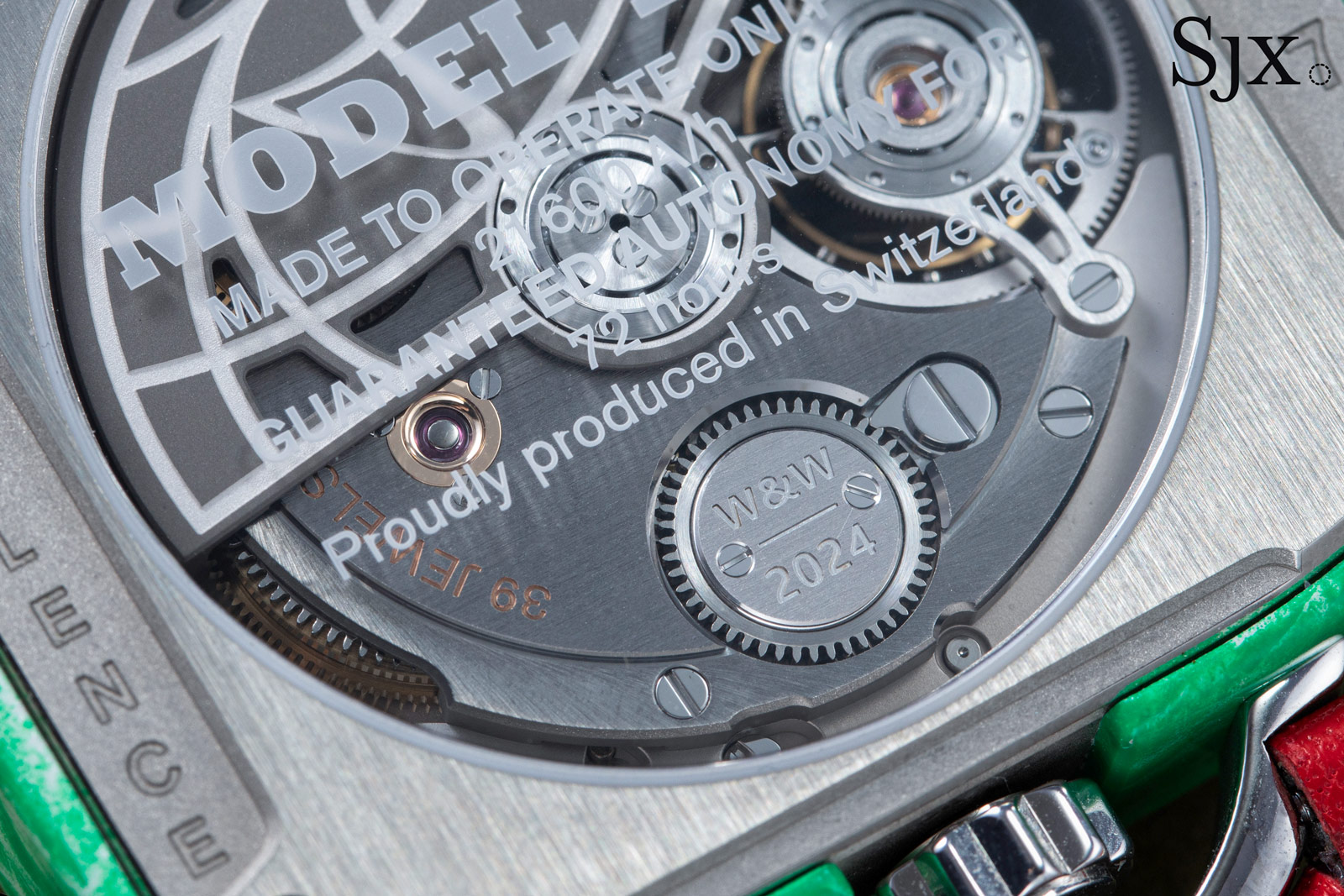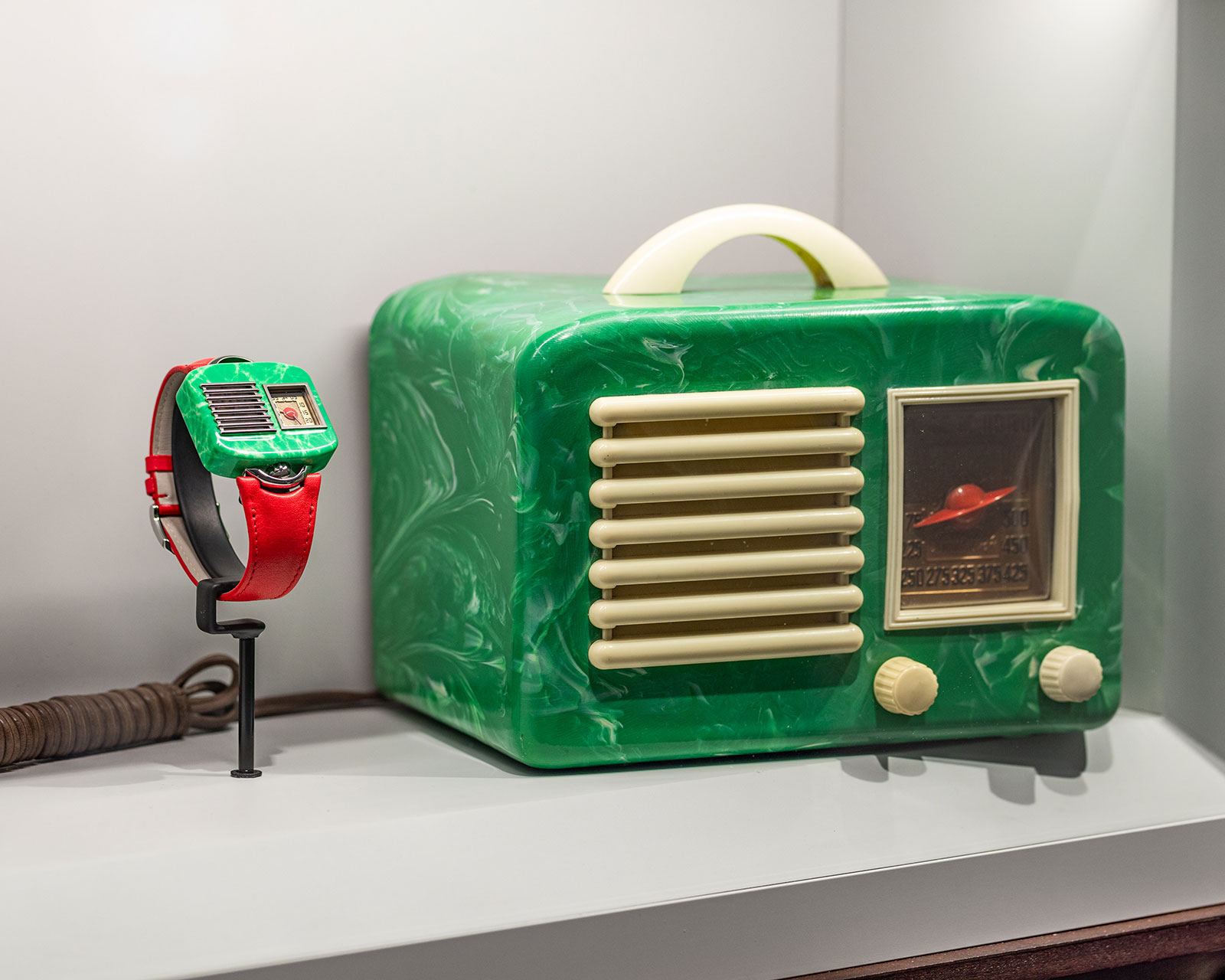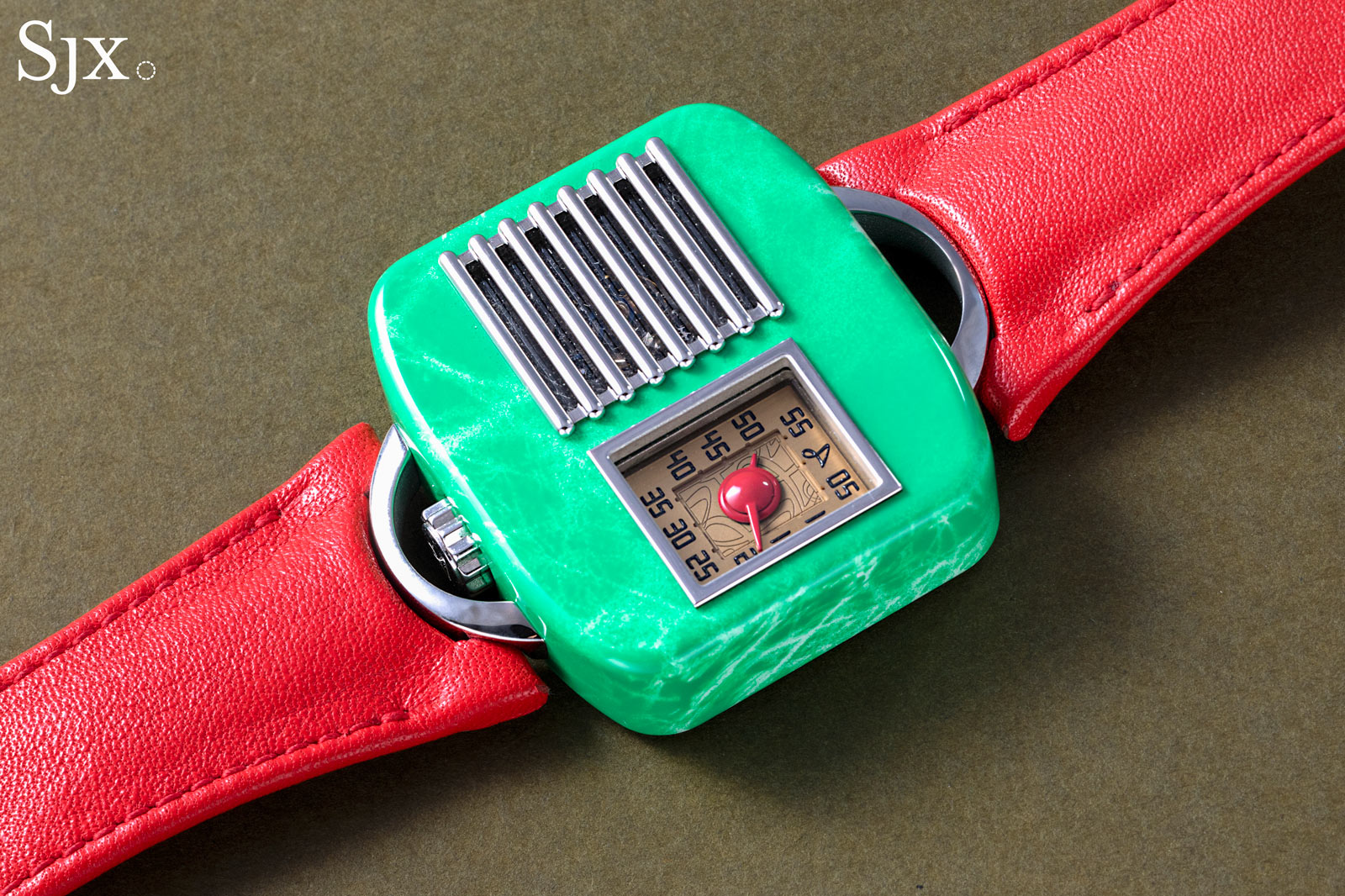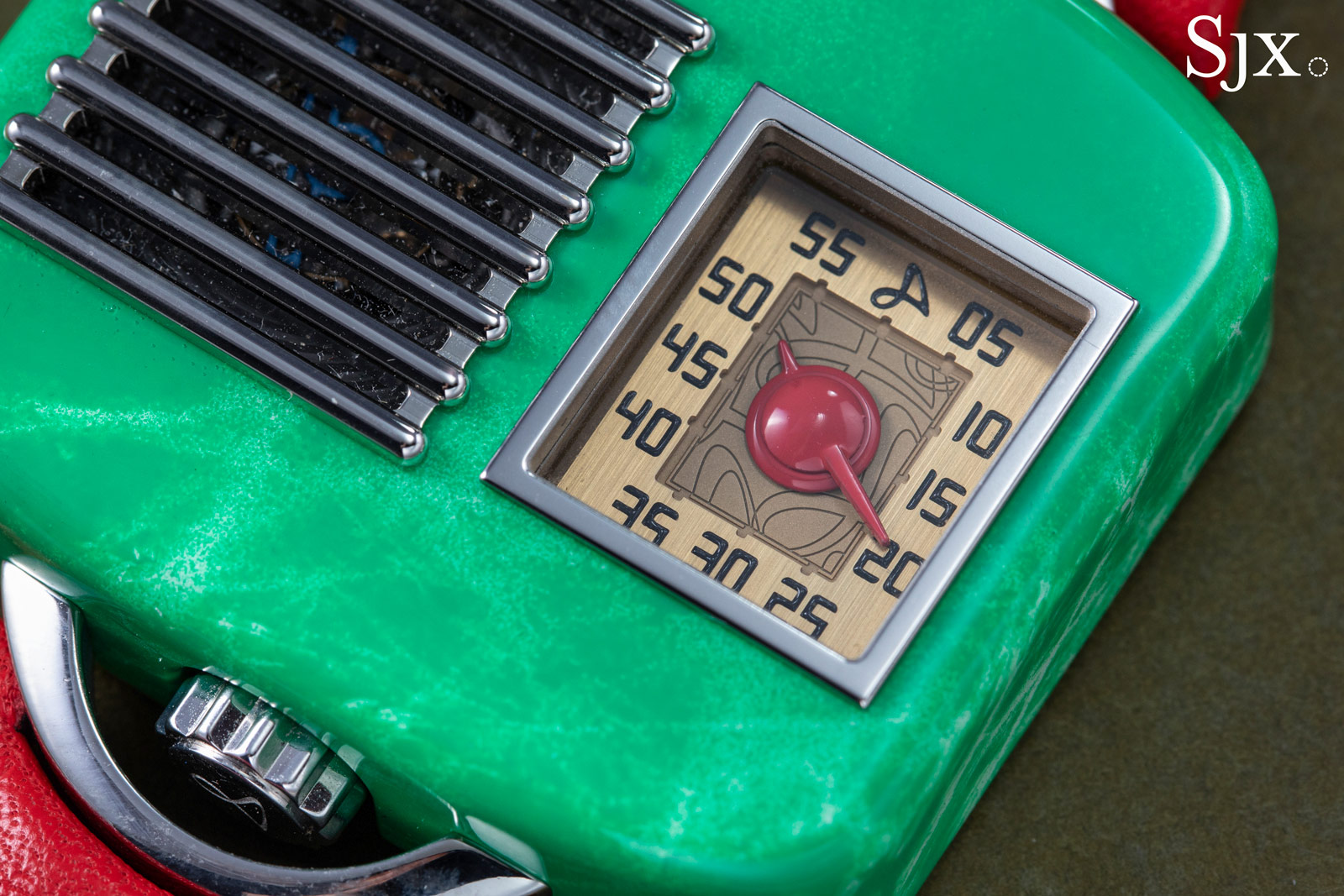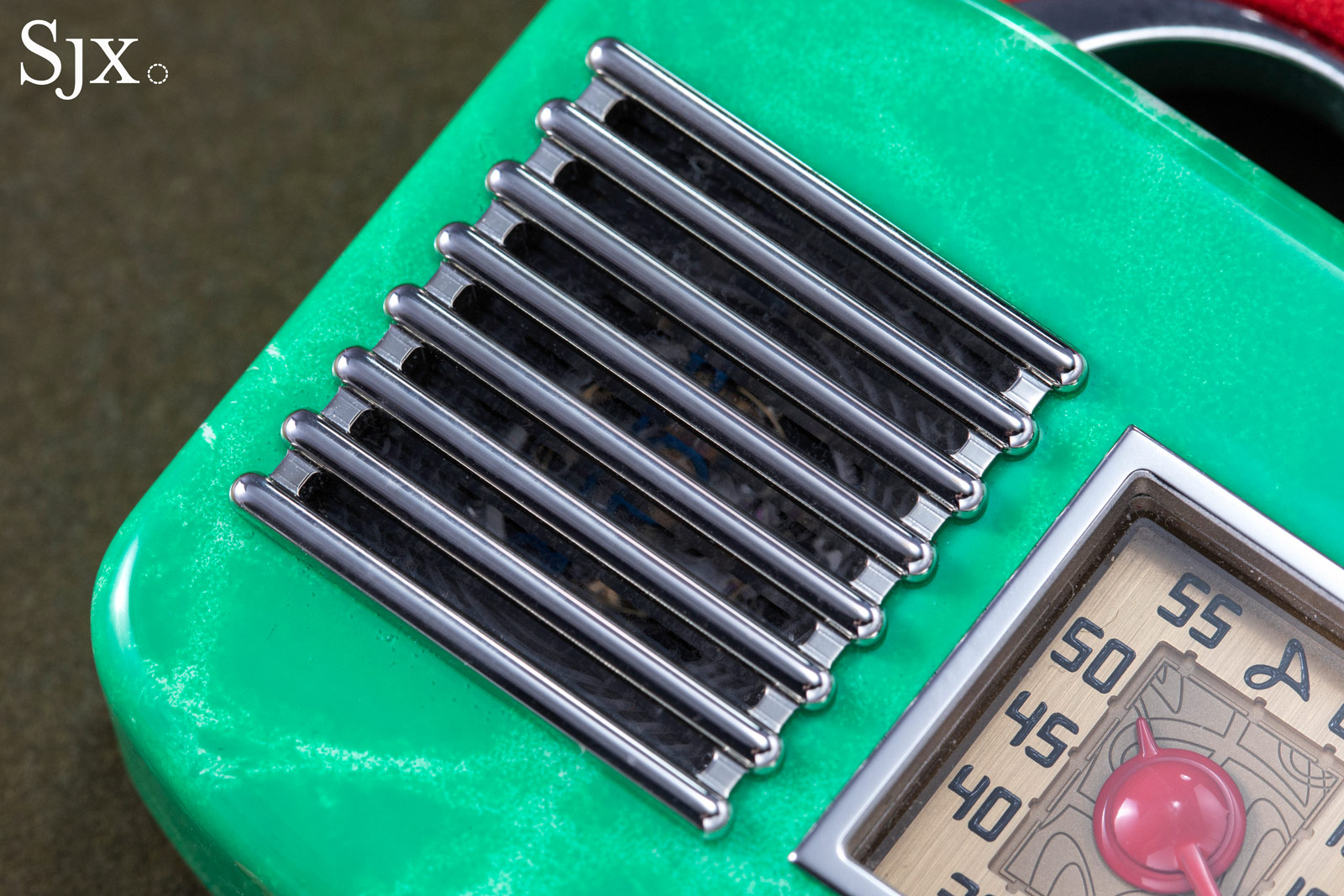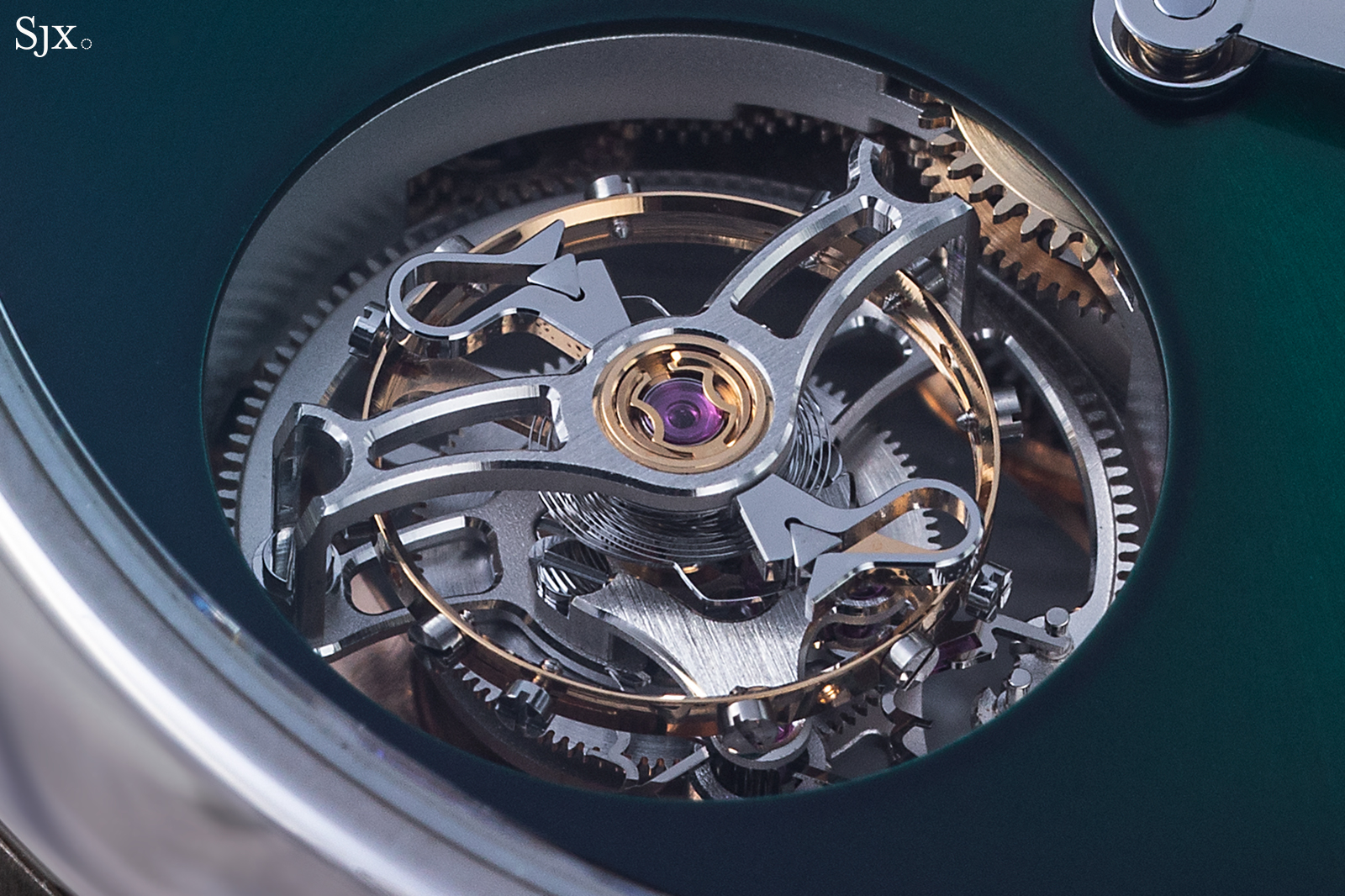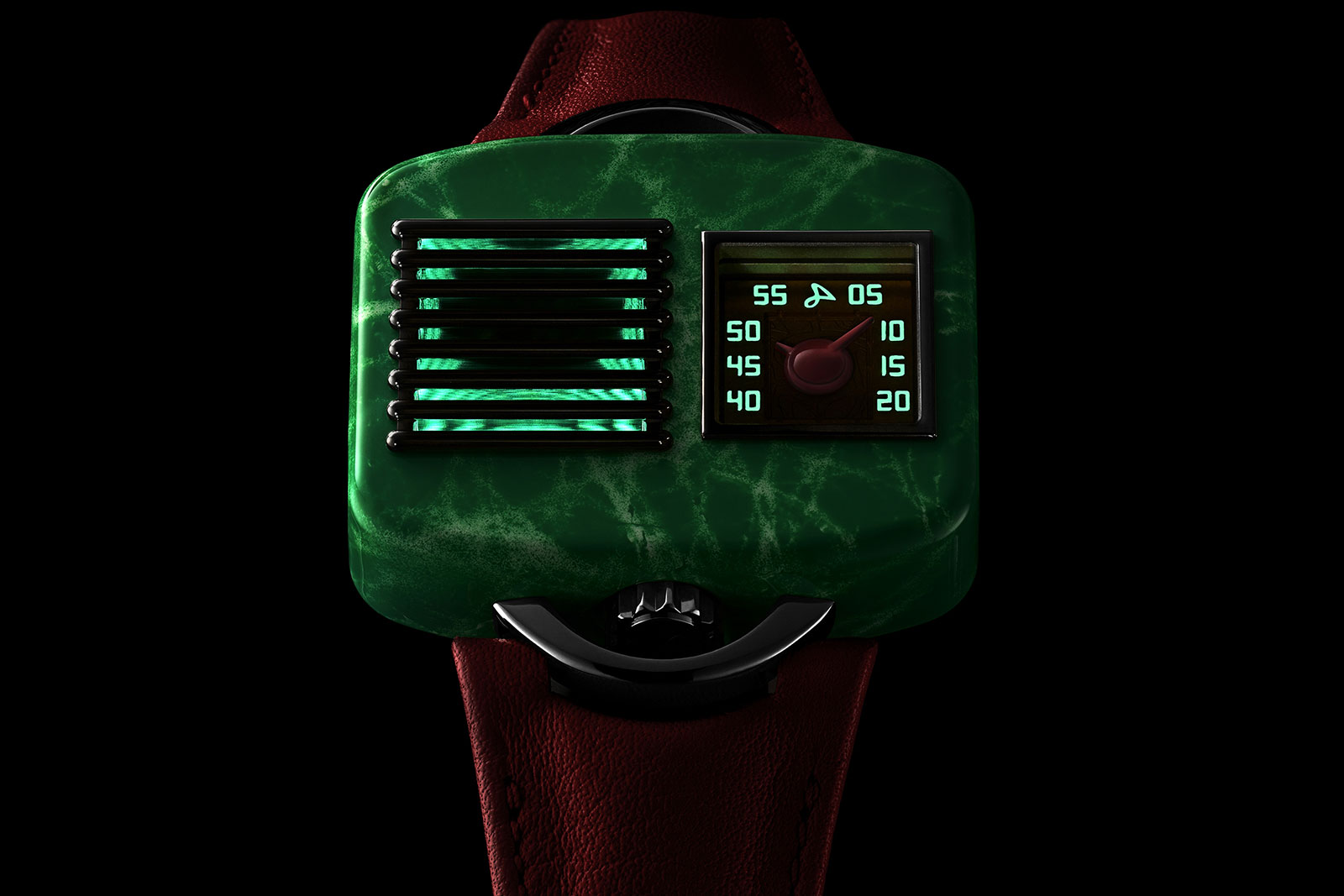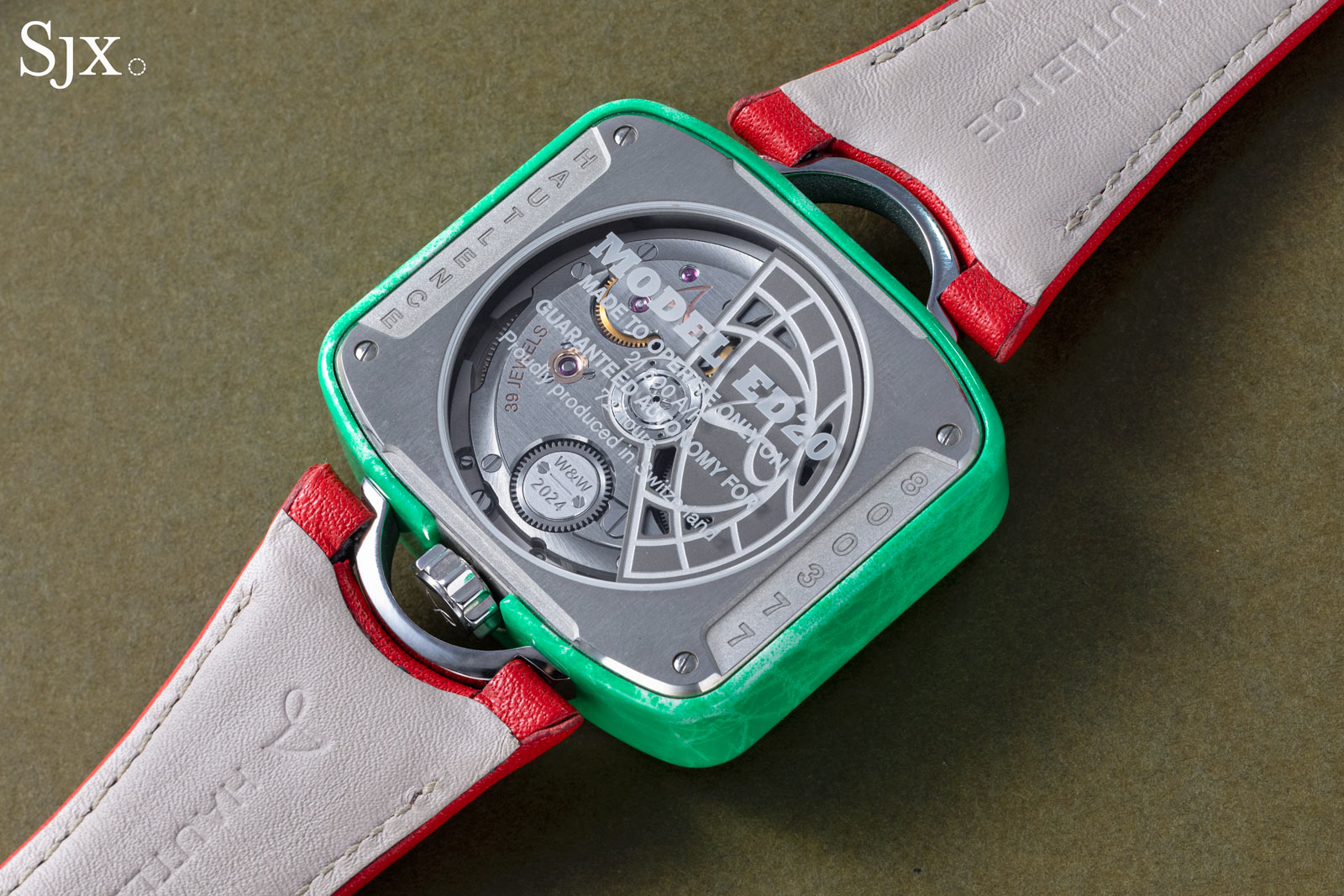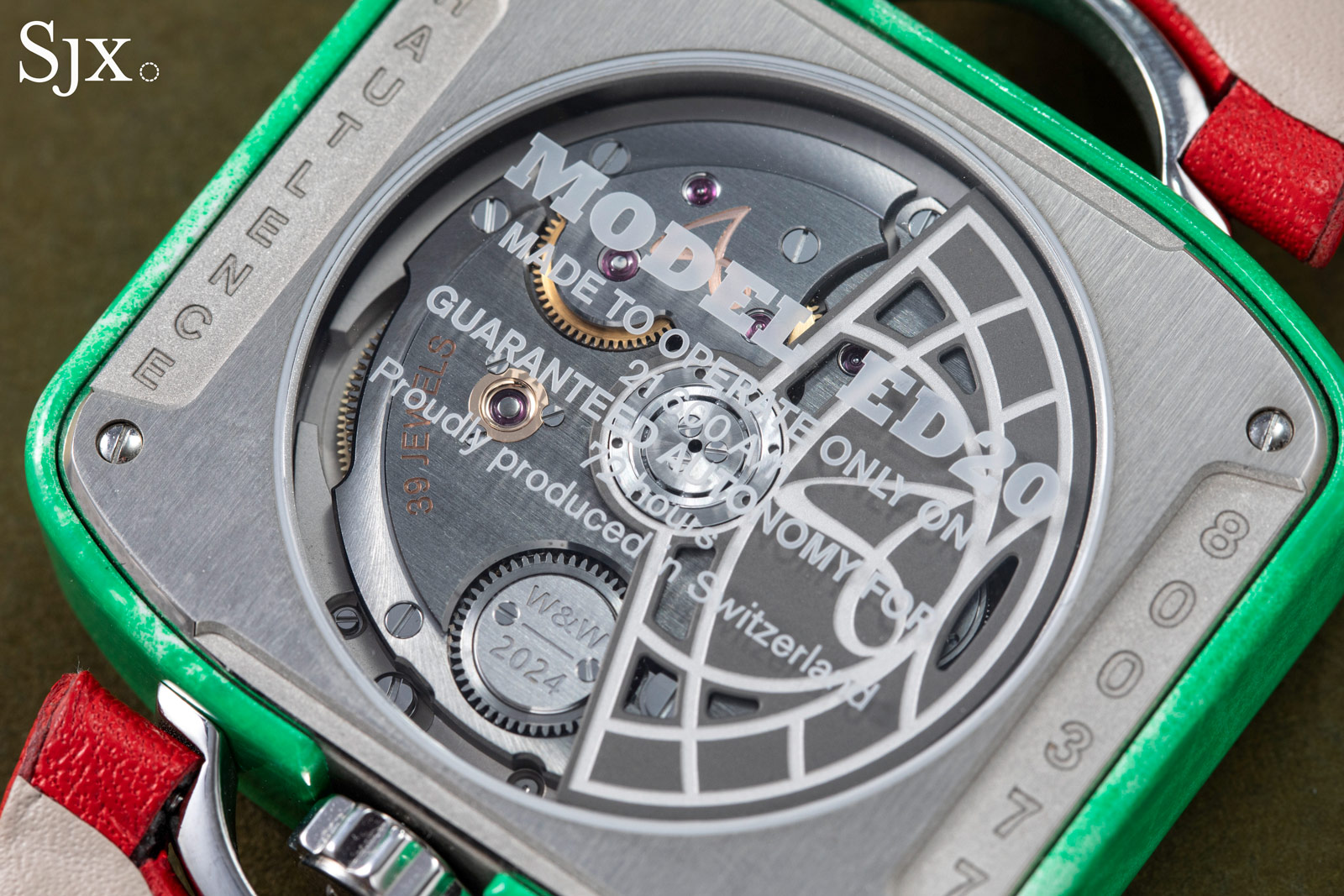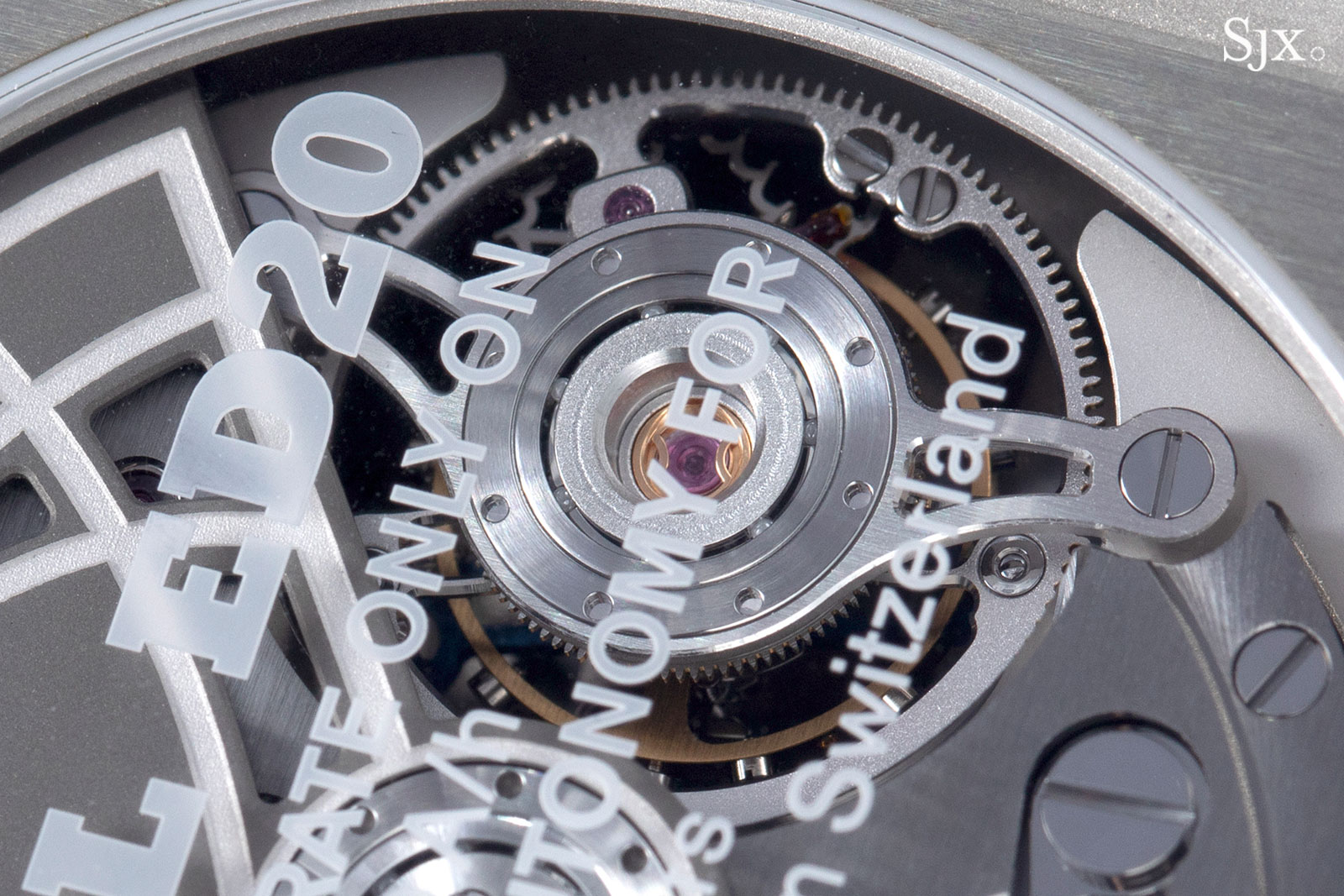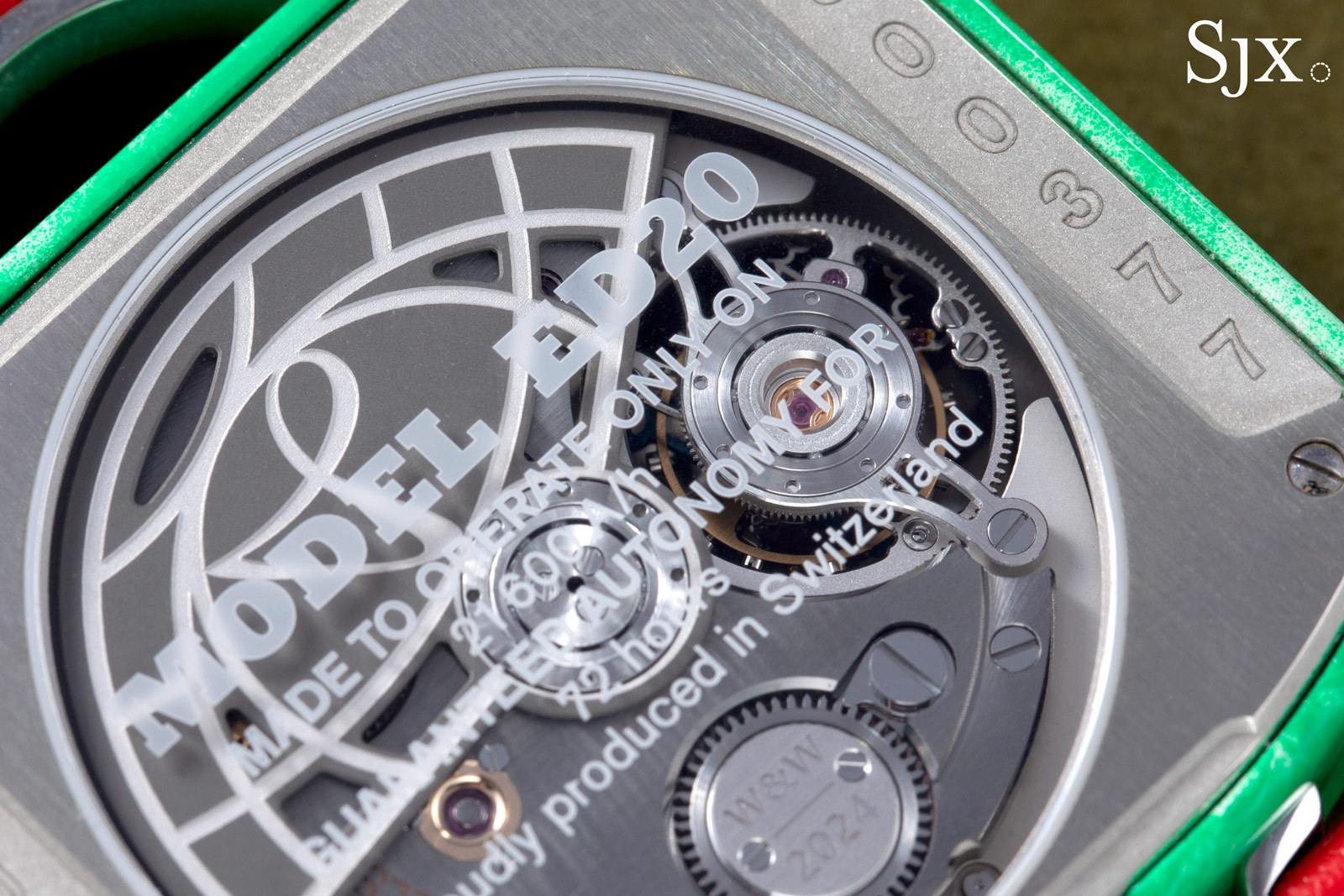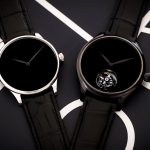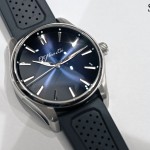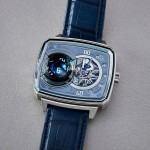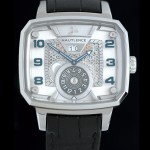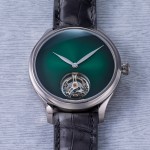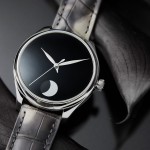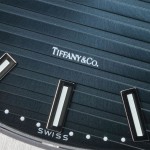Omega Revives the Speedmaster “First Omega in Space” with Cal. 3861
A new-old CK 2998.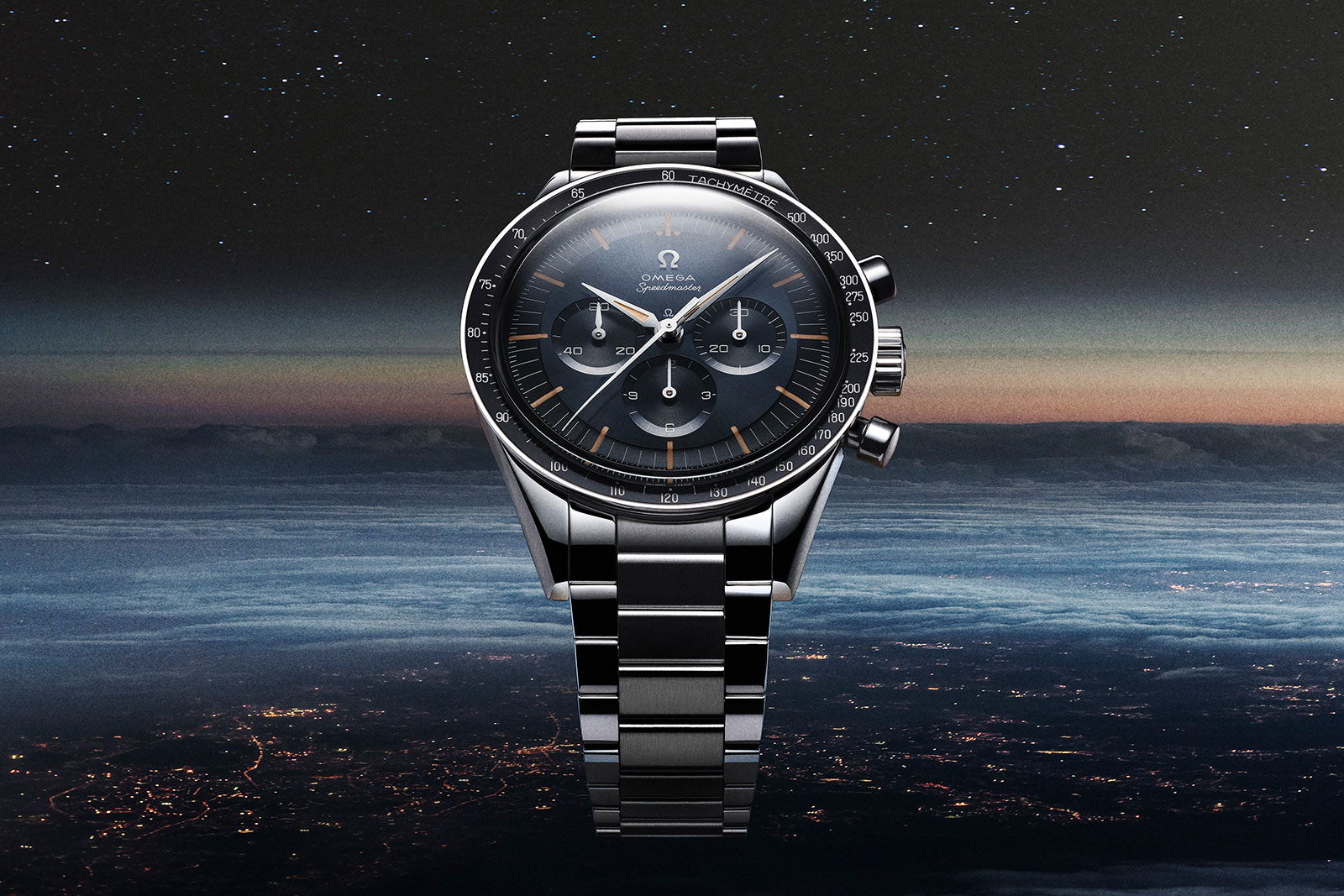
Omega is reissuing the Speedmaster CK2998 with the Speedmaster “First Omega in Space” that’s powered by powered by the latest-generation Moonwatch movement, the Co-Axial Master Chronometer cal. 3861.
But the “First Omega in Space” (FOIS) is also a keen-eyed remake of the original and sports a detail enthusiasts will appreciate: the stepped dial is a subtle grey-blue dial that replicates the unique colour found on certain vintage Speedmasters made in the 1960s.
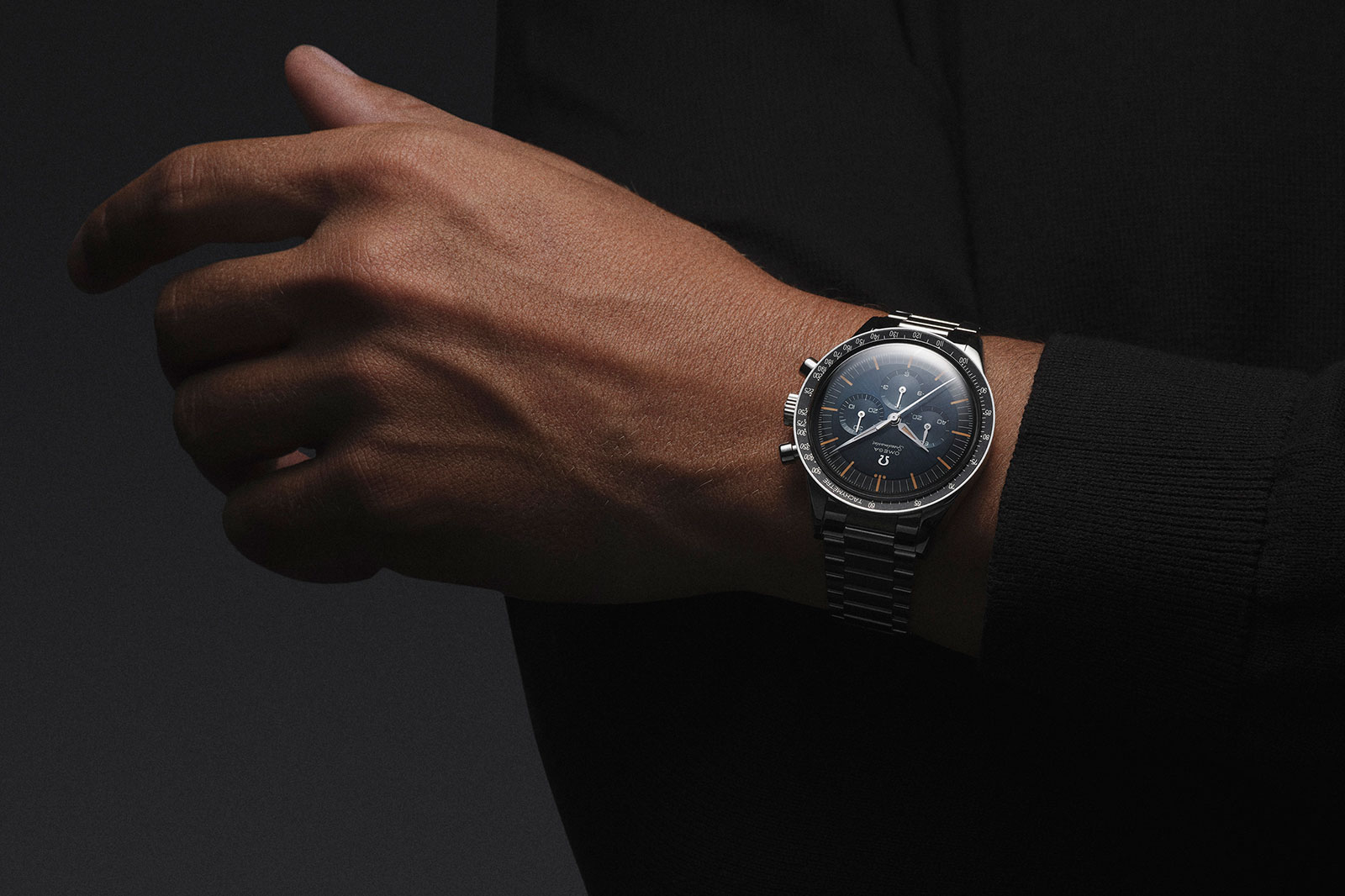
Initial thoughts
Omega issues enough vintage-inspired Speedmaster models that even someone familiar with watches like myself is sometimes confused. For the uninitiated, the FOIS and Speedmaster 321 “Ed White” will look very similar, but for the enthusiasts the distinction is clear.
That said, the FOIS is one of the most appealing recent Speedmasters. The attention to detail in design is obvious and impressive.
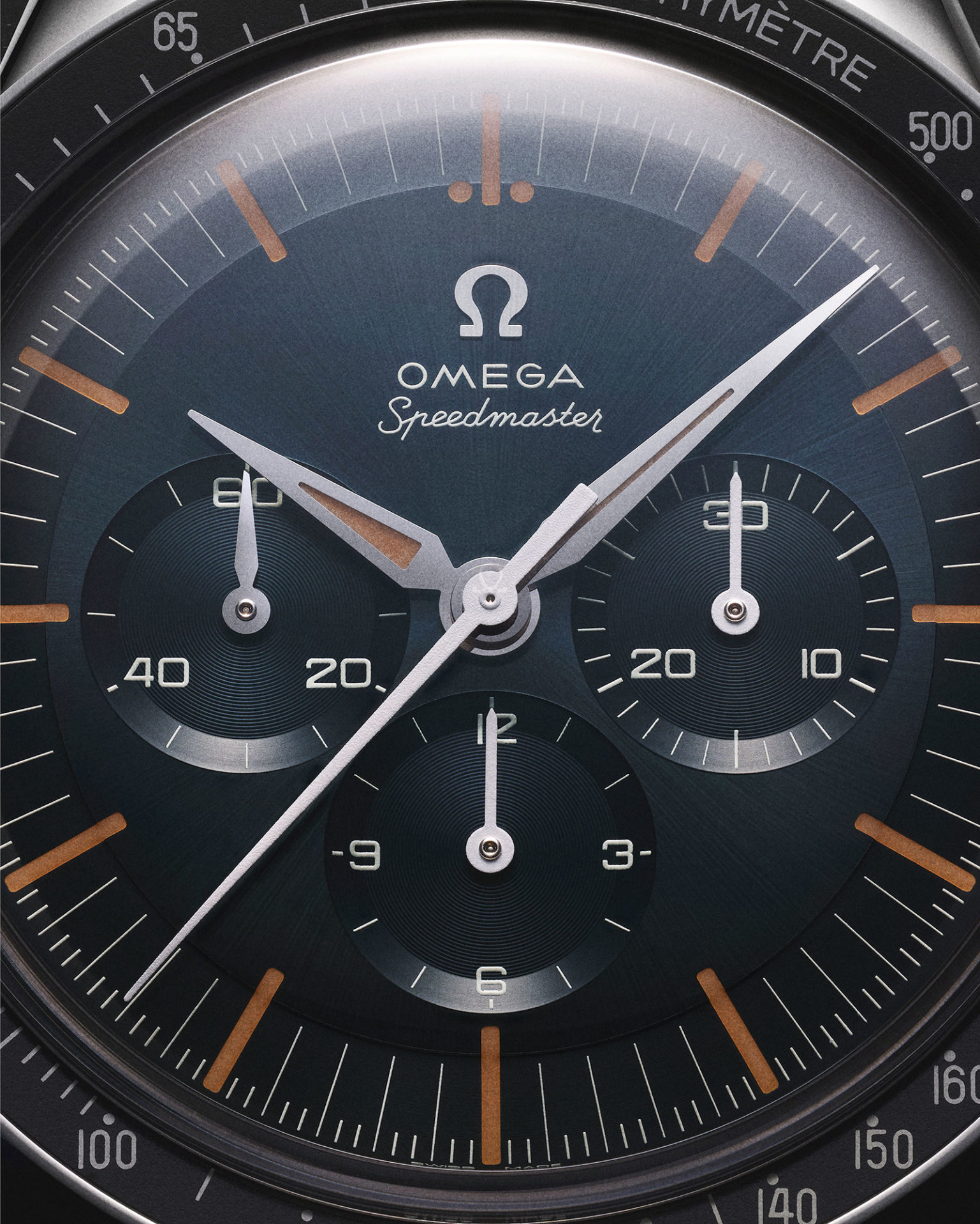
Moreover it’s a vintage remake with a twist: the grey-blue dial is esoteric enough that it looks different, but still a detail that Speedmaster fans will appreciate. The faux-vintage lume is a bit too much, but from a design perspective it works as the parchment lume complements the grey-blue dial.
Add to that Omega’s typically high quality and relatively affordable price – this is marginally less expensive than the Moonwatch cal. 3861 with a sapphire crystal – and the new FOIS is both compelling and good value.
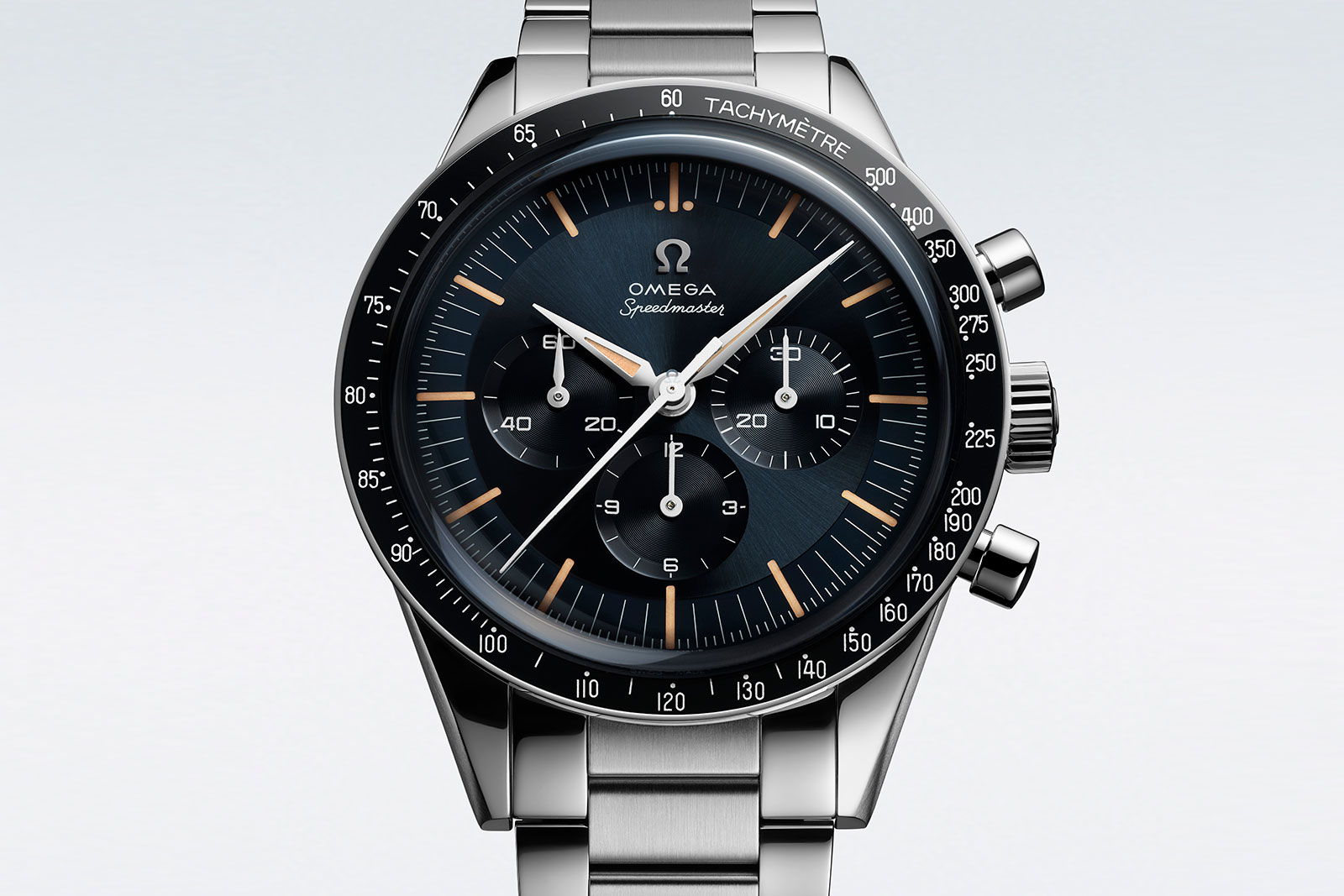
CK 2998 returns
The second Speedmaster model after the CK2915, the CK2998 was produced from 1959 to 1962. It is known as the “First Omega in Space” thanks to astronaut Walter “Wally” Schirra who wore an example – that he purchased personally – on the Sigma 7 mission of NASA’s Mercury program. When he took off on October 3, 1962, his CK2998 went along with him, making it the first Omega to leave the Earth.
Omega first reissued the CK2998 in 2012 with the original FOIS (ref. 311.32.40.30.01.001) that powered by the cal. 1861. The first FOIS was based on the vintage original, but not quite a faithful remake.
On the other hand, the new FOIS stays truer to the original, like many of Omega more recent remakes. It’s part of the Speedmaster Anniversary Series and is a regular production model.
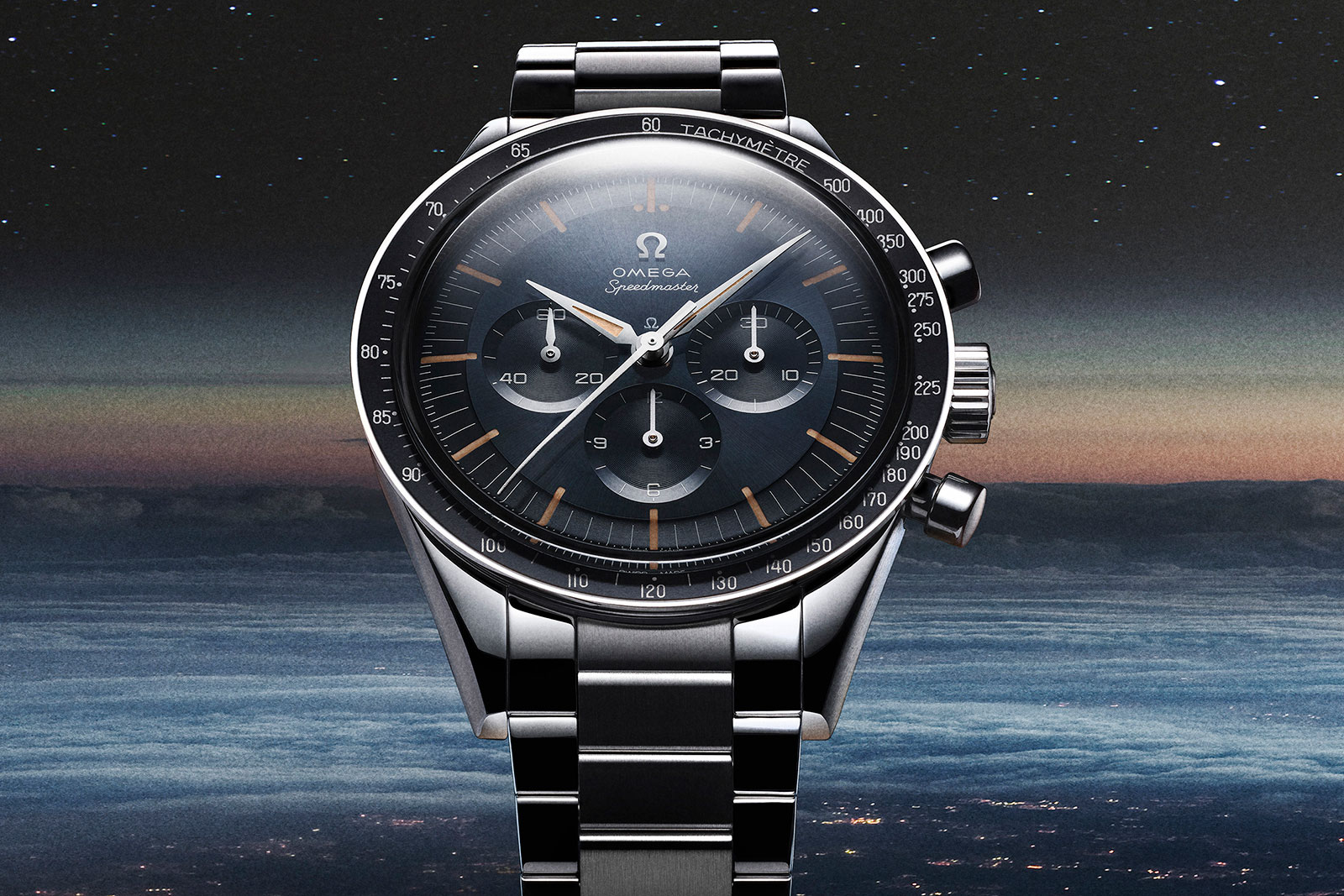
Aside from being the right size and shape, the new FOIS incorporates all of the key details that define the vintage original, including the “dot over 90” aluminium bezel insert, “alpha” hands, and applied Omega logo on a stepped dial with long indices.
Most intriguing is the grey-blue finish on the radially brushed dial, which is achieved by chemical vapour deposition (CVD) and reproduces the same shade found on certain vintage Speedmaster dials from the 1960s. The dial and hands have parchment faux-vintage Super-Luminova to complete the vintage aesthetic.
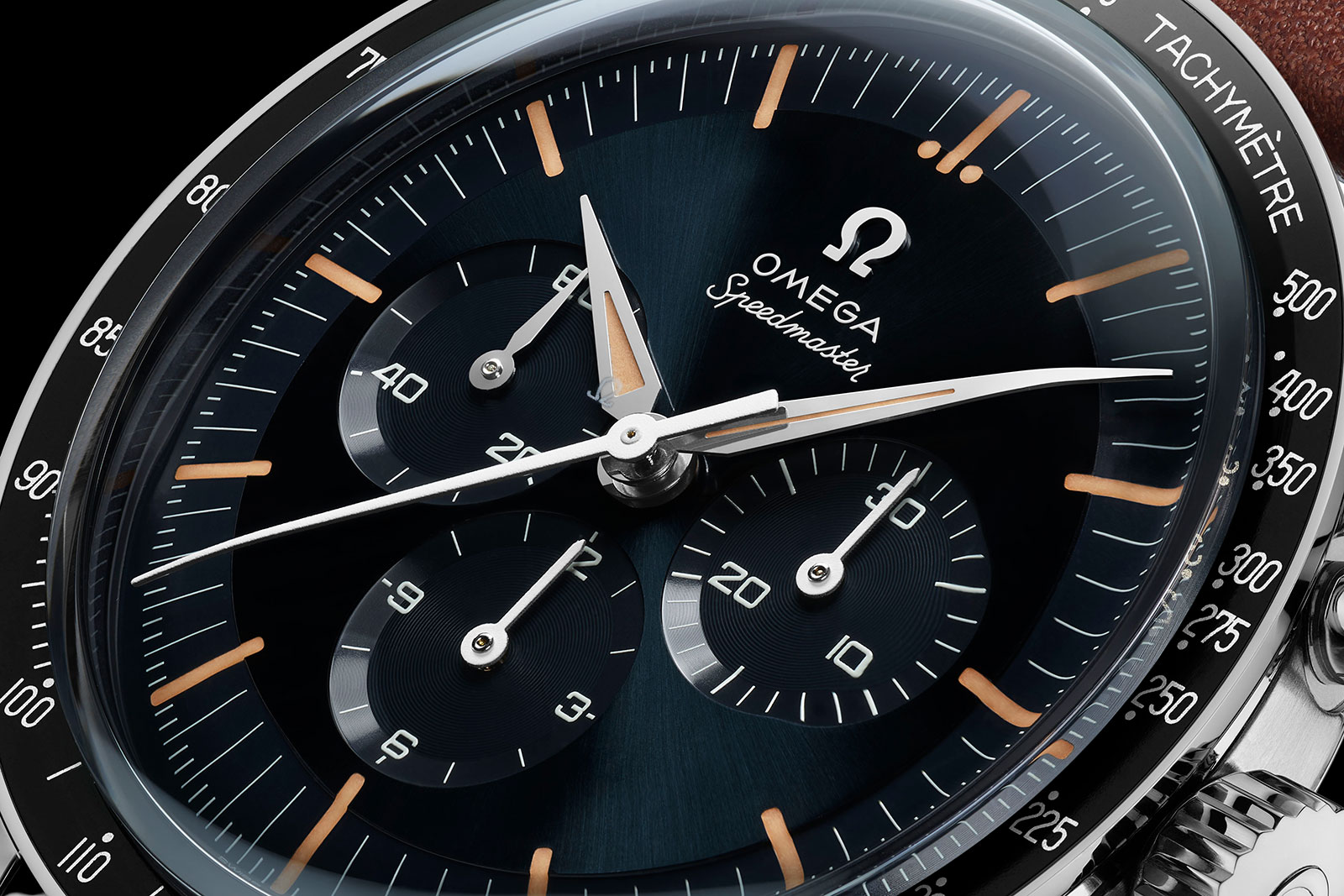
Similarly, the case is a spot-on recreation of the vintage original. It is a compact 39.7 mm in diameter and 13.4 mm high, with a highly domed sapphire crystal that mimics the acrylic crystal of the CK2998.
Notably, the FOIS case appears to be identical to that of the Speedmaster Moonwatch 321, which is historically accurate since the first three Speedmaster models, the CK2915, CK2998, and 105.003 “Ed White” all employed the same “straight-lug” case.
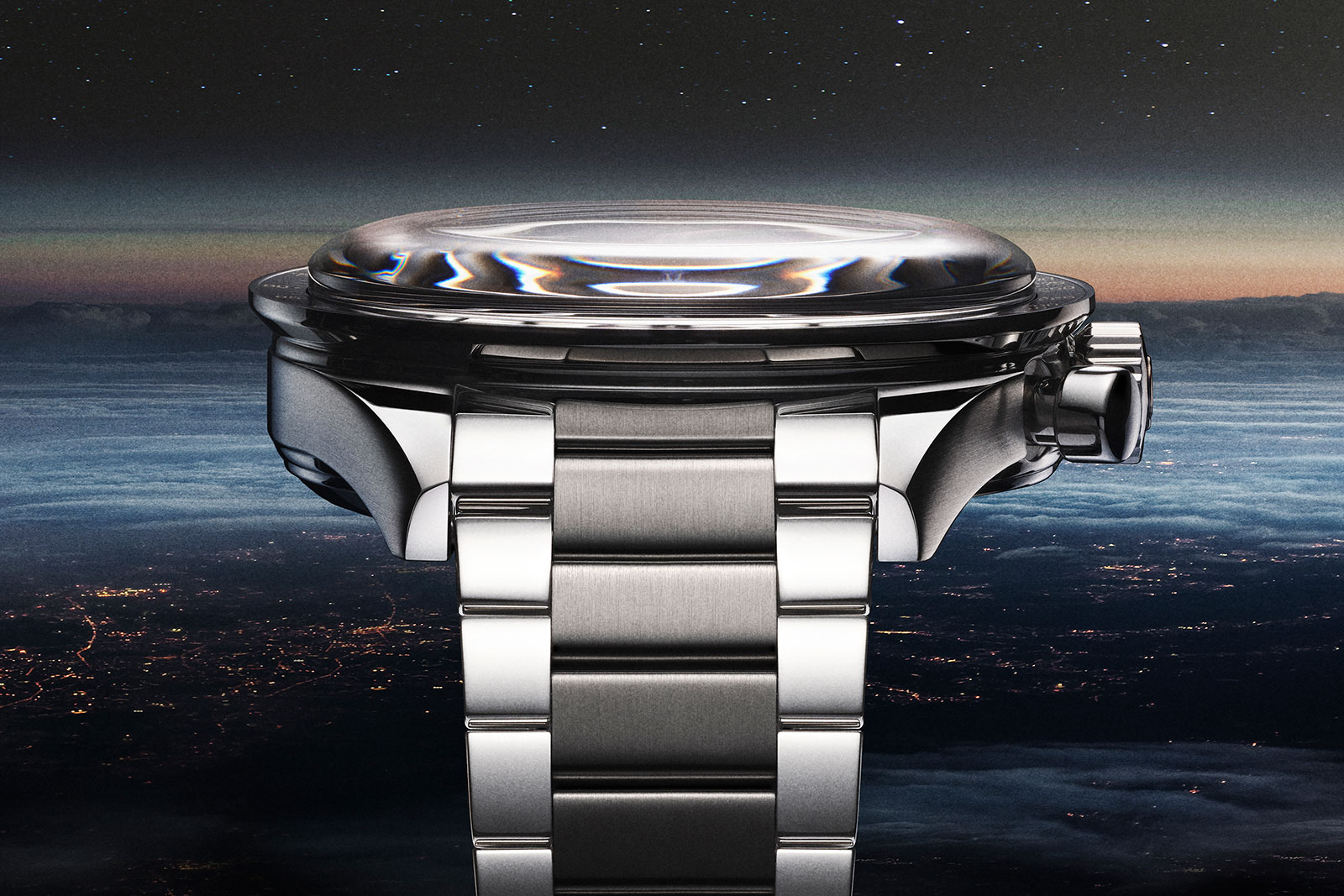
While the styling is convincingly vintage, the movement inside is Omega’s latest and greatest. The cal. 3861 is essentially the original Moonwatch calibre enhanced with a Co-Axial escapement and proven by METAS testing for Master Chronometer certification.
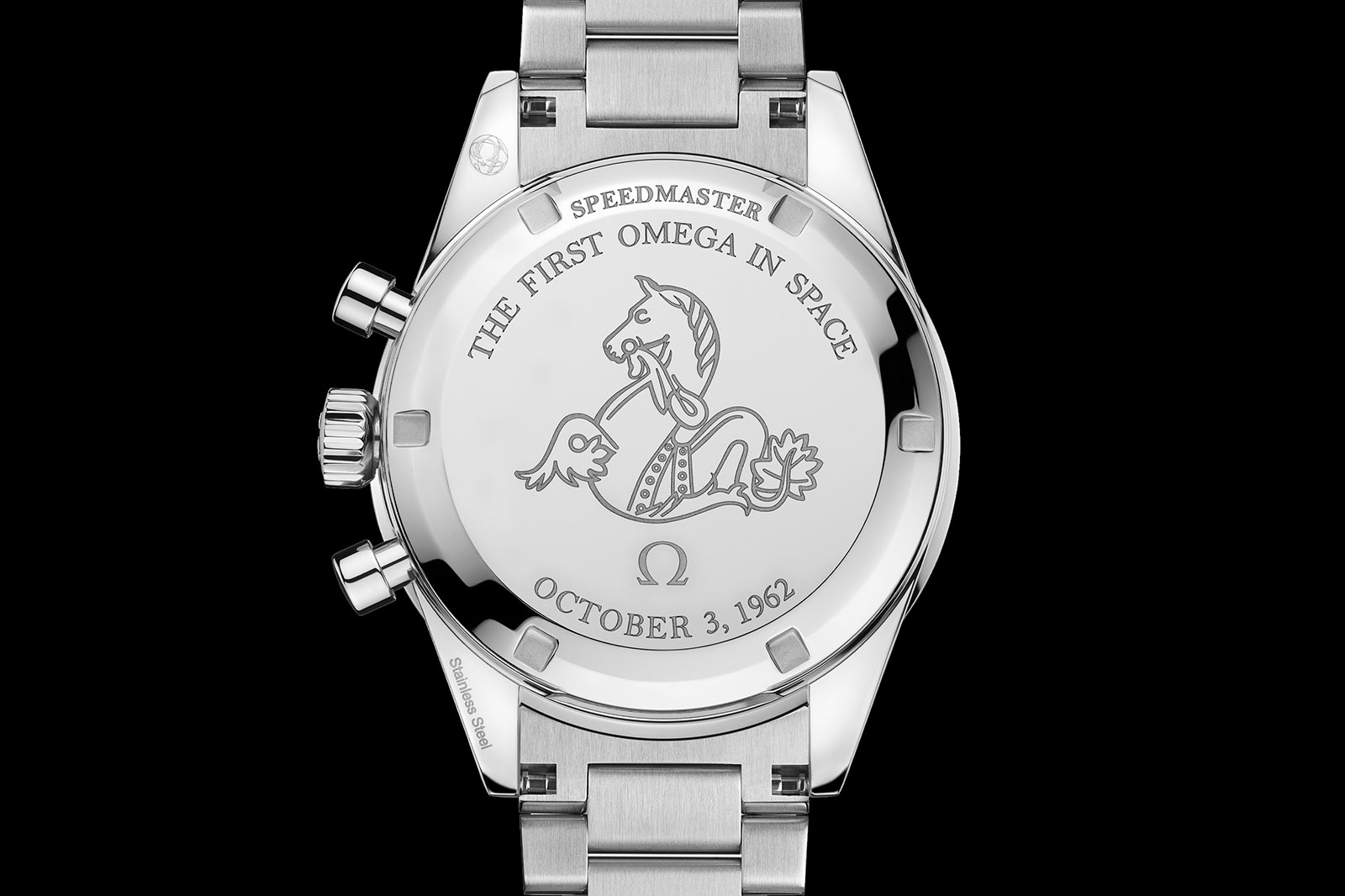
Thought an industrial movement, the cal. 3861 is appealingly decorated and look good. Unfortunately, the movement is concealed beneath a solid back that’s historically accurate with a double-stepped edge and the Speedmaster seahorse logo, but with the addition of too much text commemorating the CK2998’s trip to space.
On its face the solid back might seem like a shame as the cal. 3861 is an appealing movement. That said, given the faithful vintage-inspired styling the FOIS, the solid case back is appropriate.
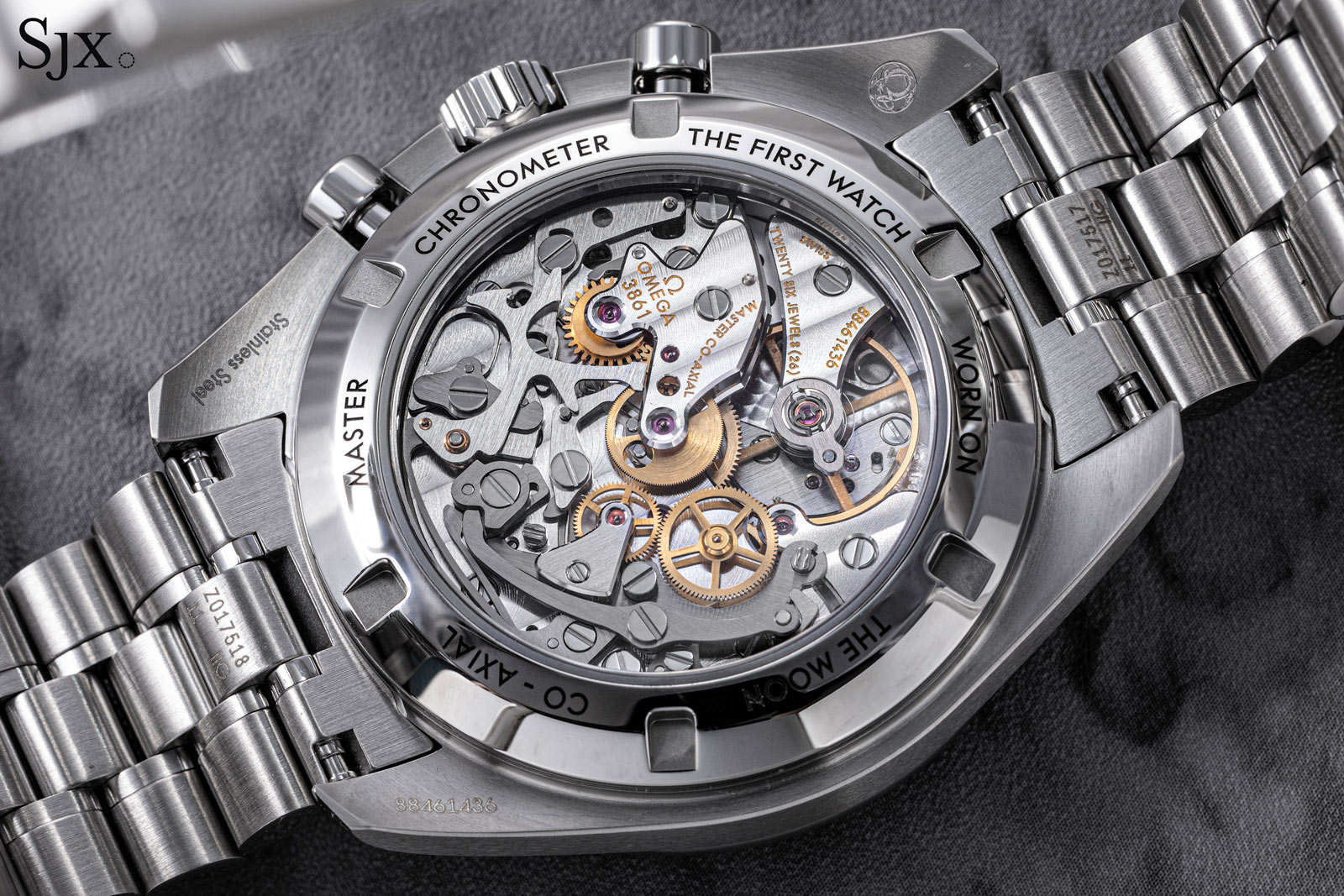
The cal. 3861 as seen in the Speedmaster Moonwatch
Key facts and price
Omega Speedmaster “First Omega in Space”
Ref. 310.30.40.50.06.001 (bracelet)
Ref. 310.32.40.50.06.001 (black leather strap)
Ref. 310.32.40.50.06.002 (brown leather strap)
Diameter: 39.7 mm
Height: 13.4 mm
Material: Steel
Crystal: Sapphire
Water resistance: 50 m
Movement: Cal. 3861
Functions: Hours, minutes, seconds, and chronograph
Frequency: 21,600 beats per hour (3 Hz)
Winding: Manual wind
Power reserve: 50 hours
Strap: Steel bracelet or leather strap
Limited edition: No
Availability: Now at Omega boutiques and retailers
Price: US$7,900 on steel bracelet; US$7,500 on strap
For more, visit omegawatches.com.
Back to top.


